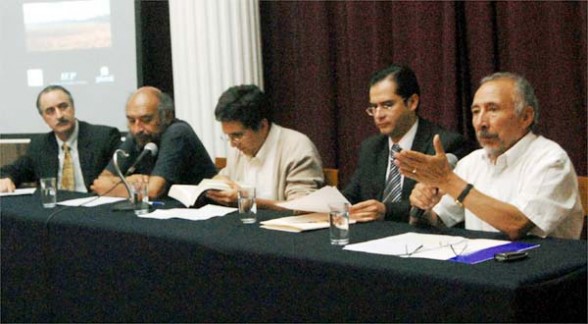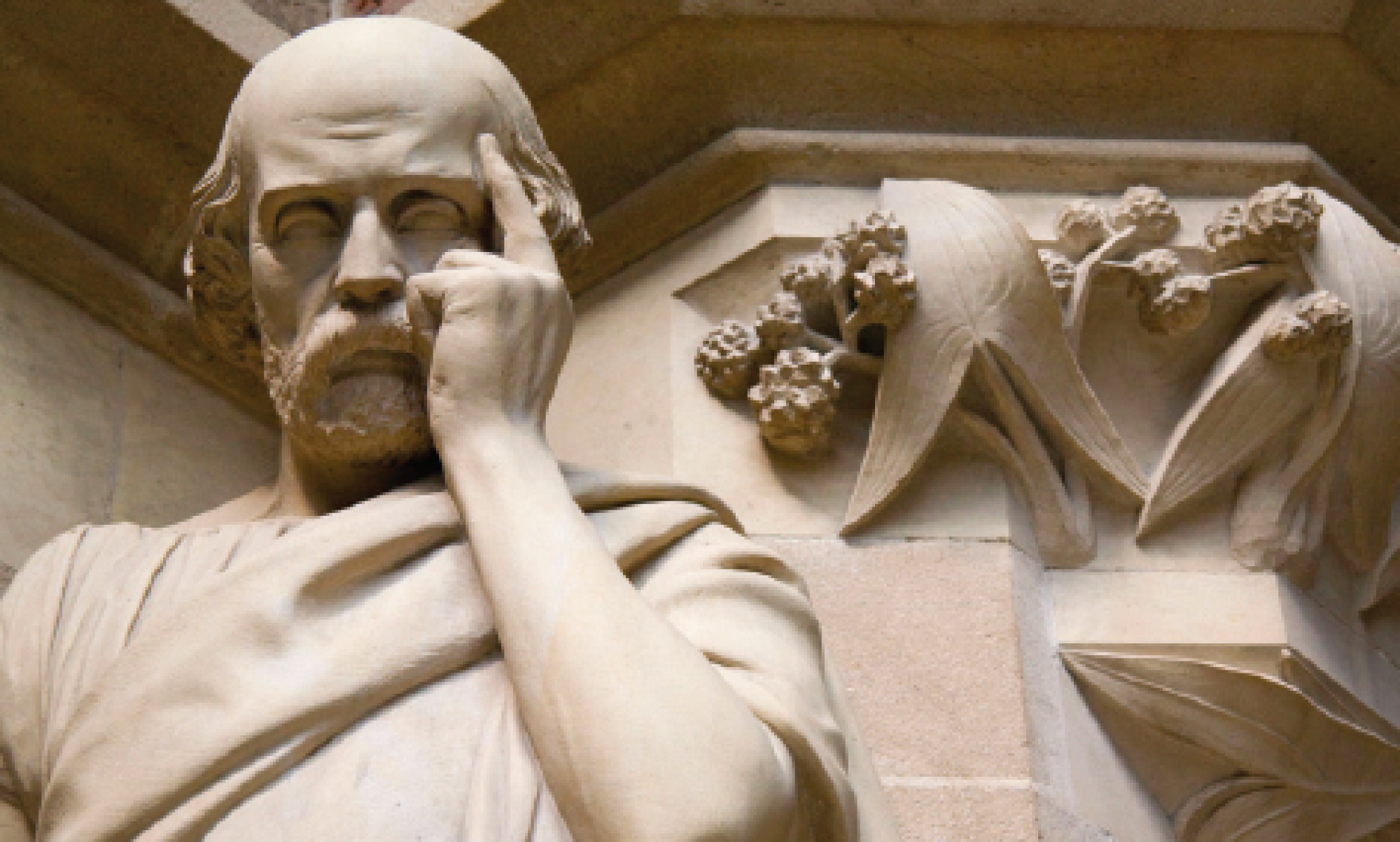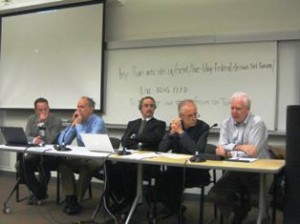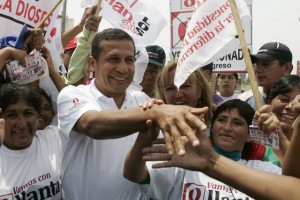
Los Tiempos in Cochabamba reviewed the presentation of “Democracia en la región andina” last month. The launch of the Bolivian edition of the book was held at CESU in the Universidad Mayor de San Simon.
Bolivia: democracia en construcción, ¿atrás o adelante?
Una reseña del libro “Democracia en la región andina”, recientemente presentado en Cochabamba
Por: Oscar E. Jordán Arandia Los Tiempos
¿Cómo se puede evaluar la democracia? ¿Cuáles son los parámetros con los que se logra discernir la solvencia de un sistema democrático? ¿En qué se ha avanzado y dónde peligra el desarrollo de la democracia?
Esas preguntas, con sus perspectivas particulares y sus rasgos generales y comunes, están explicadas en el libro “Democracia en la Región Andina”, una compilación de Maxwell A. Cameron y Juan Pablo Luna en base a estudios específicos del estado de la democracia en los países andinos (desde Venezuela hasta Chile) y publicado por Plural Editores, en colaboración con IDEA International y el Instituto de Estudios Peruanos.
Más de 20 personas han participado en la investigación de los rasgos característicos del estado de la democracia en cada país, en el caso de Bolivia los autores son Moira Suazo, Carlos Toranzo, Agustín Goenaga, Santiago Anria y Maxwell A. Cameron.
Si bien cada país tiene sus propias características, el marco metodológico con el que el libro ha sido trabajado es la clave para poder encontrar —en cada uno— rasgos comunes que permiten visualizar desde un panorama más amplio lo que está pasando en los seis países que componen la región andina.
El marco metodológico parte de tres grandes vertientes: las elecciones, el orden constitucional y ciudadanía y participación.
“Las elecciones no son suficientes para establecer una democracia, pues esta no es solo un sistema para elegir líderes sino un sistema de representación basado en un mínimo consenso político sobre las reglas constitucionales y la plena participación de los ciudadanos” (pag. 514).
Desde esta visión, los autores, en el caso de Bolivia, encuentran en el país una doble perspectiva, o más bien una dualidad extremadamente singular donde se cruzan, por un lado, importantes avances inclusivos pero a la vez peligrosos rasgos de concentración de poder y poca representatividad.
Tal vez el rasgo que más preocupa en la democracia boliviana sea del orden constitucional, el cual se ha debilitado especialmente por la concentración del poder en el Ejecutivo, lo que ha llevado a la inoperancia del tribunal Constitucional, la politización de la Judicatura y el nombramiento directo anticonstitucional de los miembros de la Corte Suprema.
Respecto a la democracia electoral, en Bolivia no se ha perturbado los procesos electorales aunque la concentración del poder es preocupante y afectó al poder legislativo.
En lo que sí parece avanzar la democracia boliviana es la participación ciudadana, especialmente en cuanto a la inclusión de los pueblos indígenas. Sin embargo, aún en este campo la debilidad del sistema democrático se expresa con peligrosidad en la doble capacidad de toma de decisiones por parte del Ejecutivo, el cual por un lado aplica una visión cooperativista horizontal y, por otro, designaciones totalmente verticales. Además, las limitaciones para articular las demandas de todos los sectores sociales ha provocado una clara división entre los municipios rurales y los urbanos así como los políticos —que ahora son autoridades del Gobierno— orgánicos (del MAS) y los invitados (independientes).
Los autores apuntan a que, por el momento, es precipitado dar una especie de sentencia definitiva al estado actual de la democracia en Bolivia, pero lo que sí está claro es que existen fortalezas y debilidades que podrían arrastrarla a un autoritarismo no representativo o empujarlo hacia un sistema inclusivo y participativo. La última palabra está en manos de los ciudadanos y es el tiempo el que se encargará de definir el camino por el que transitará la democracia nacional.
“En conclusión, hoy por hoy, Bolivia puede ser caracterizada como una democracia electoral donde ciertos aspectos de Gobierno representativo han sido modificados o debilitados, mientras que otros aspectos de corte participativo se han visto reforzados. La viabilidad de este nuevo modelo se verá en el futuro pero al menos, hasta la fecha, Bolivia parece haber superado problemas importantes del pasado: gobiernos débiles e inestabilidad política” (pag. 270).
Investigación con metodología propia
Todo comenzó en una reunión en Lima, Perú, en diciembre de 2007, donde autores y editores buscaron elaborar un primer borrador del marco metodológico y teórico para hacer evaluaciones y balances del estado de la democracia en cada uno de los países de la región andina, con la participación de académicos locales, de tal forma que el marco metodológico no fuese algo impuesto desde afuera, abstracto, irrelevante o inaplicable.
En este sentido, el punto de partida fue la metodología de IDEA International (Institute for Democracy and Electoral Asistence) que es muy amplia y flexible y que se ajusta de acuerdo a las constituciones de los países. Empezando con ese marco y como punto de referencia la Carta democrática de la OEA, que tiene una idea general de lo que es la democracia, se inició una serie de debates que aún así, no fueron suficientes para alcanzar los objetivos planteados, es decir iniciar una red de investigación en torno a este tema.
La reunión fue auspiciada por la Fundación Martha Piper de la Universidad Columbia Britanica (UCB) y por el programa Glyn Berry del departamento de Asuntos Exteriores y comercio Internacional de Canadá.
“Esta metodología se propone para servir de plantilla de una investigación realizada bajo la rúbrica de un proyecto piloto sobre el estado de la democracia en la región andina. Las citas primarias para esta discusión incluyen la Carta Democrática Interamericana, el índice electoral PNUD, el marco de evaluación de la democracia de International IDEA y la auditoria de la democracia de Costa Rica” (pag. 513).
Resumen del estado de la democracia en la región andina
Chile
Las elecciones son libres, competitivas y justas. Sin embargo, el sistema binominal contribuye a generar un sistema poco competitivo y abierto.
En el orden constitucional, una serie de enclaves autoritarios permanecen en la constitución pese a la independencia de los tres poderes.
Colombia
El ejercicio de la violencia afecta la participación ciudadana en las elecciones. Si bien existe notable independencia del poder judicial, hay evidencia de interferencia paramilitar en el poder legislativo.
La violación extrema de los derechos civiles incluye desapariciones y homicidios cometidos por agentes estatales.
Perú
Si bien se ha recobrado independencia en las autoridades electorales, aún existen deficiencias en el sistema electoral. Hay débil institucionalización del Legislativo y Ejecutivo que produce una tendencia hacia intereses particulares. El gobierno utiliza la mano dura para reprimir movilizaciones y protestas sociales.
Ecuador
Hay una notable ausencia de los partidos políticos.
El poder legislativo se ha inclinado a negociaciones casi secretas en lugar de un ámbito institucional.
El Buen Vivir y la participación indígena han sido consideradas en la nueva Constitución Política del Estado.
Venezuela
El derecho a participar en elecciones ha sido violado, así como la seguridad de los candidatos.
Su orden constitucional es hiperpresidencialista y se ha obstruido la labor de representantes electos en el ámbito subnacional.
La falta de independencia judicial restringe los derechos civiles y políticos.
Bolivia
Hay poca evidencia de fraudes electorales aunque existe persecución de algunas autoridades subnacionales electas que han sido removidas de su cargo. La independencia del poder judicial ha sido afectada, así como la del Tribunal Constitucional.
El modelo de participación social se basa en los movimientos sociales.




